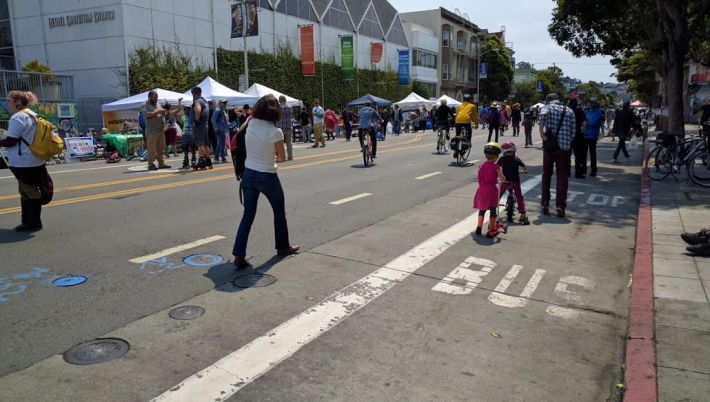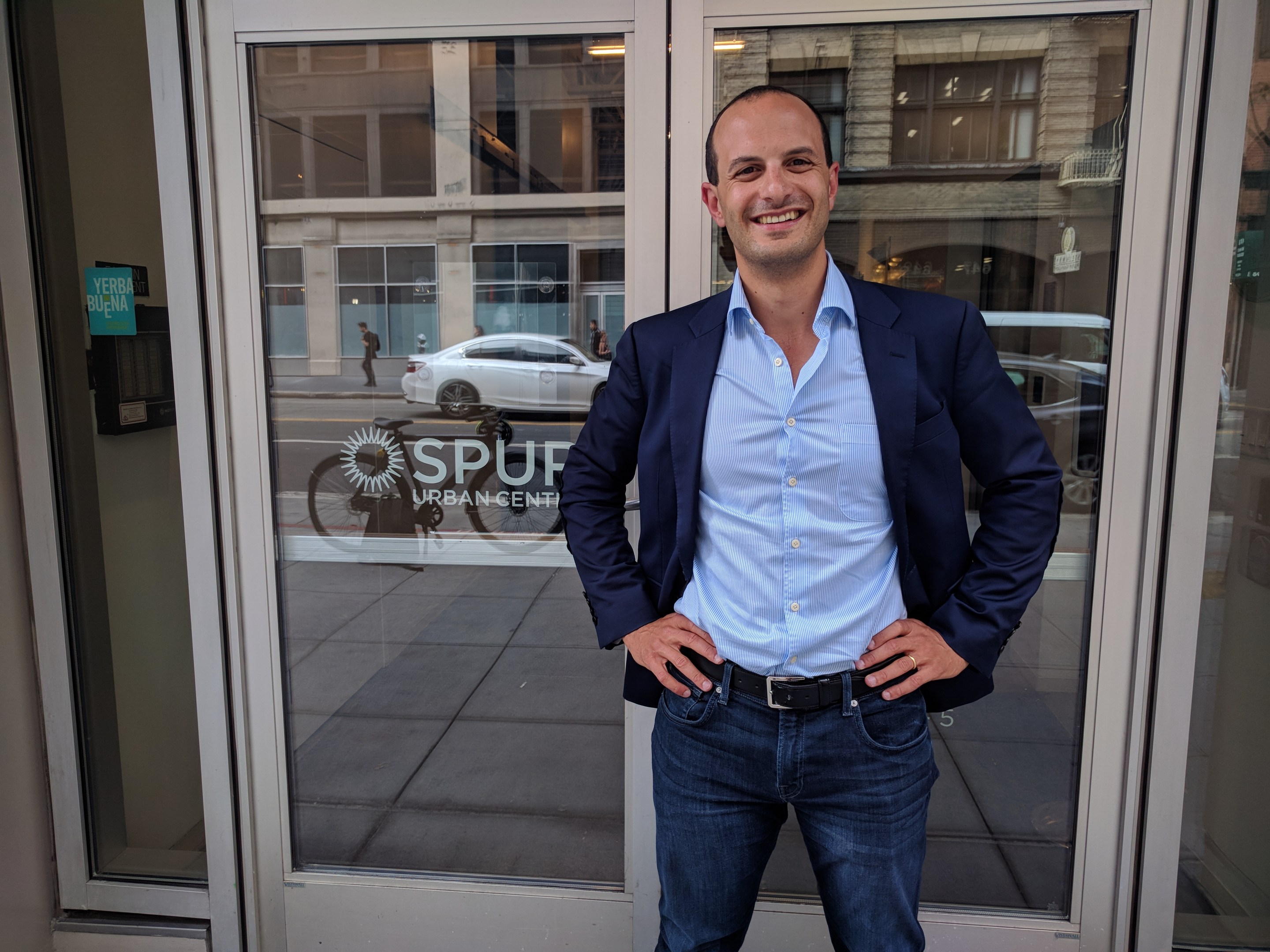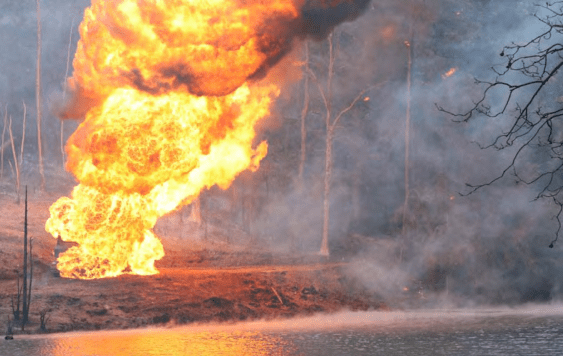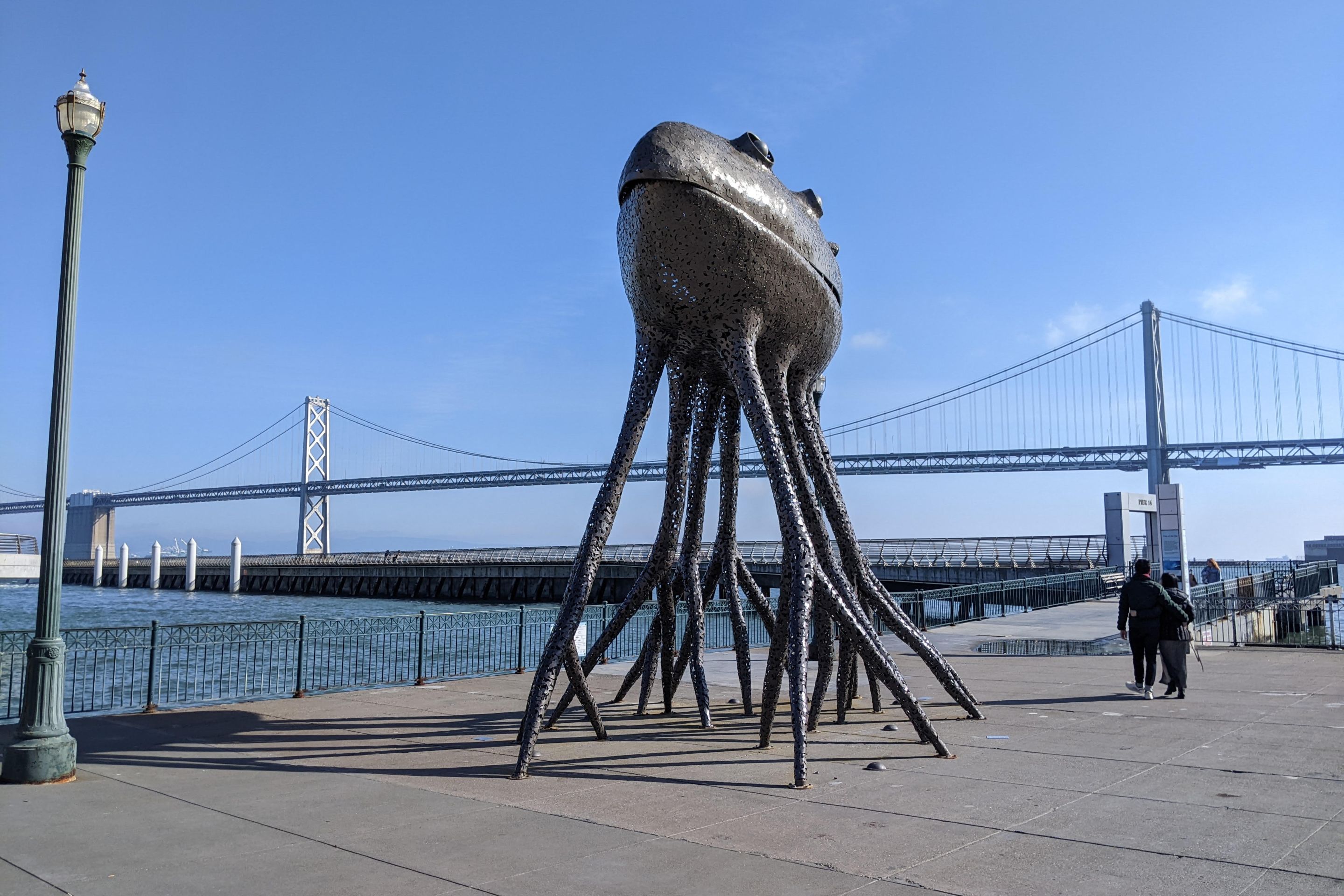Note: GJEL Accident Attorneys regularly sponsors coverage on Streetsblog San Francisco and Streetsblog California. Unless noted in the story, GJEL Accident Attorneys is not consulted for the content or editorial direction of the sponsored content.
Readers may remember Nick Josefowitz for his time on the BART Board of Directors, representing District 8 in San Francisco. Or they may recall him from his run for the Board of Supervisors, District 2. They certainly know him for his long-standing advocacy for improved transit throughout the Bay Area.
SPUR recently announced that they have brought Josefowitz on as the organization's new Director of Policy. From the SPUR release:
Josefowitz brings to this role extensive experience with policy implementation, regional governance, and state-level advocacy. “Having served on SPUR's board for three years, Nick is deeply familiar with SPUR's policy work and has long been an advocate for a better Bay Area,” says SPUR President and CEO Alicia John-Baptiste. “We are thrilled to have him and are particularly excited to have him grow SPUR’s advocacy work in San Francisco, Oakland, San Jose and across the region.”
Previously, Josefowitz served as a BART Board Director, where he led the efforts to pass and issue a $3.5 billion fix-it-first infrastructure bond; to transition BART to 100 percent renewable power – a first in the country for a transit agency; and to pass state legislation to enable construction of almost 30,000 new homes at BART stations. He is a Commissioner for the Metropolitan Transportation Commission (MTC) and the Water Emergency Transportation Authority (WETA) where he is working to reduce highway congestion, make housing more affordable, and zero-out our region’s climate emissions. Nick also served on the Board of Directors of Capital Corridor, the San Francisco Environment Commission and the Oversight Committee for the City’s Office of Community Investment and Infrastructure.
Streetsblog sat down with Josefowitz at SPUR's San Francisco office last Friday to discuss his work, the upcoming regional transportation "mega measure" and what he hopes to accomplish at SPUR.
***
Streetsblog: I understand that, as part of your new job, you're going to be working on SPURs advocacy for the new "mega measure."
Nick Josefowitz: You mean "Faster," formerly the mega measure. We've been going out and talking with lots of transportation leaders and community groups and environmental groups and business and labor leaders around the region. There's lots of appetite to do something of the scale that would really match the scale of the problem that we have around congestion and transportation. There’s a sense around the Bay Area that now is the moment that we need to address one of our biggest problems: how do we get around.
SB: Is there kind of a "keystone" project that the measure will include? Say, the mythical second Transbay tube?
NJ: There’s a sense that in previous measures the headline was always “a big project.” What’s really needed now is a set of projects that will transform the system. How do we really connect BART with Caltrain, with Capitol Corridor, with express buses, with active transportation? How do we take all these different systems and finally weave them together, so they all work together, and you can just get where you want to go, reliably, quickly, without being impeded by a lack of coordination? It’s really that systems-level change that I think is the driving force, animating this thing.
SB: And it won't just be about transit, will it?
NJ: What’s really exciting about SPUR is it’s really taking a whole set of the most important problems that we face in San Francisco, Oakland, San Jose and elsewhere at the regional scale. It’s not just a transportation shop, not just a housing shop, not just a climate shop; it’s an organization that is working on transportation and housing and climate and resiliency. It understands the interconnectedness, and that if you approach any one of these problems individually you will fail. You need to think about communities and regions and systems, and if we can approach all of them together at the scale of the problems of what we’re facing, you can have the biggest impact.
SB: I see. This reminds me of something I said ages ago about high-speed rail. While the majority still supports it, calling the 2008 bond that launched it a "high-speed rail" bond almost missed the point. It's really about modernizing the state's rail systems, which are almost hopelessly antiquated. It seems there's a lesson in this for the mega--sorry, the "Faster" measure.
NJ: I think what we’re doing with “Faster” is trying to learn the lessons from lots of places. And yes, there’s an enormous amount to learn from the challenges that high-speed rail has faced. We're also learning a lot from what LA did in 2016, with its $120 billion Measure M. I also think it’s important that not all of the federal and state transportation money gets sucked into Southern California. We’re working to make sure we can be competitive for that state and federal money. We're also learning lots from Seattle. Atlanta passed a regional transportation measure as well.
SB: So we'll follow the leads of these other successful measures?
NJ. Yes, we’re kind of fortunate that we’re not first out of the gate.
SB: But why are we so late? The Bay Area has had a transportation problem for a long time. Why are we just catching on now?
NJ: I don’t know if there was one moment. You just realize how our cities are not working and our region is not working. People talk about the impact that it’s having on their lives. They talk about getting stuck in traffic when they’re trying to pick their kids up from school. Or how they don’t take their kids to visit their grandparents as much because they can’t afford to live in the community they grew up in and it's so expensive and inconvenient to take the bus or train. And you talk with people who have been slammed by climate change, exposed to wildfires or seal level rise, or extreme heat.
SB: Right. At some point it stopped being whiny, or isolated, or theoretical--it's doing tangible harm to people.
NJ: You see the impact these sometimes-abstract problems have on people's lives.
SB: You grew up in the U.K. Do the differences between here and cities in Europe seem particularly stark now?
NJ: Yes. We don’t have to accept that the problems that we have in the Bay Area are an inevitable consequence of our geography or our economy. There are other cities that faced similar challenges and confronted them differently and stepped up their game in a different way. We can make it easy to get around. We can make the region a place that’s really affordable for everybody. We can really build an equitable society where everybody has an opportunity to thrive.
SB: And you saw that growing up in London?
NJ: I remember as a kid, when I was 16, I managed to get a summer job working at a newspaper and it was completely on the other side of town, and there was no way my parents were going to drive me there.
SB: And no need.
NJ: I jumped on the trains, went from the end station on the District Line in Richmond, connected to the Docklands Light Railway--
SB: Clear across London, west to east.
NJ: I could access that opportunity because of the incredible transportation system that London has. When I was 12 or 13, we would jump on a bus or jump on the Tube, and be able to access all this incredible culture and new experiences and be able to have friendships that spanned communities in a way that’s really difficult if you’re relying on your parents driving you around.
SB: And I grew up with some of that in New York. It's part of the joy of living in a big city.
NJ: That was really special. A thing that makes cities so great is all these opportunities they provide. There’s so much benefit to cities done right. And to urbanism done right.
SB: But New York and London also share some of the Bay Area's big problems, chiefly, housing affordability.
NJ: It’s important that we don’t think that any city is perfect. London has deep problems around affordability.
SB: What other cities, in your view, hold lessons for the Bay Area?
NJ: I was in Barcelona this summer. They have this amazing bus system. It’s reliable and efficient and it's fast. You can easily transfer, it's relatively affordable, my children, who don’t like walking around in the heat, were happy as peaches to be riding these buses to the park and zoo and the museums.
SB: I've heard you talk about the interplay between good transit and housing density. How high do we have to build around transit to make things work?
NJ: SPUR is in the middle of a regional strategy, looking at the big problems we have today, and what we are facing in the next fifty years. They take satellite imagery of the Bay Area, and rather than look at it in terms of artificial political boundaries, they identified fourteen different place types.
SB: Place types? Like urban cores, suburbs?
NJ: From super-dense downtown San Francisco, to downtown Oakland, to old streetcar suburbs, to cul-de-sac suburbs, to open space and agricultural land, industrial areas, office parks... it’s actually really powerful. Nobody's done this for the Bay Area before and it really helps us think about the kind of interventions that we need in these different communities.
SB: So one size doesn't fit all?
NJ: The regional strategy has to hold true to the history and values of those places and the people who live there and hope to live there. The future of a cul-de-sac suburb will look different from the future of a streetcar suburb. And that's going to look different from downtown Oakland or San Francisco. That's what we need to be able to develop as a real plan for the region--to appreciate the nuances and subtleties of the communities that make up our region. It's ground-breaking work.
SB: So variable heights and densities?
NJ: It's getting away from the concept of heights and densities and instead talking about how can we envision the future of these communities; how can we help these communities become their best selves in a regional context.
SB: I wasn't sure how to address this, but how do you think your run for the Board of Supervisors informs the way you look at the region?
NJ: That feels like a really long time ago, but I met so many incredible people who were having a profound impact on our region, city, community, and country in so many different ways. I think sometimes you can get caught up and end up being very personally ambitious and you lose track that actually, there are lots of different ways you can have profoundly positive impact in the community. Ironically, that’s something I took away from that experience. Coming out of that made me recommit and double down on the work I do, making housing more affordable, making it easier to get around our region, working on climate change and other environmental challenges that we have. And preparing for the way climate change will affect our communities that we can’t escape. These issues only get more important as every day goes by, but I truly think that SPUR brings together the best minds to work on it and find compelling solutions.
SB: I've given you a time machine. Please visit 2050 and come back and describe San Francisco and the Bay Area. How does it look?

NJ: Good question. I guess when I go to see my grandkids, in 2050, they're no longer worried about wildfires and sea level rise and extreme heat. When I go visit them, I find that they live in a community where they know their neighbors. It’s diverse and vibrant and my grandkids can walk to their preschool, and walk to the supermarket, all without parental supervision. Or they can take a bus, or whatever type of vehicle they use, to go visit their friends.
SB: Sounds lovely. What else?
NJ: We’ve created real communities that work well for every type of person in our society, whether they’re folks who are going to be seniors--the age I'll be at that time--or families with young kids. Regardless of your income or your background, we’ve built a region on the foundation of shared prosperity.
SB: Can your grandkids play in the street?
NJ: I hope my grandkids can play in the street, play in an amazing park right nearby, or play on the rooftop park over the library that’s right next to them. I hope they can climb the trees that line their streets, can play in the Bay and the ocean, and can have fun riding the bus. I know my kids have fun riding the bus now, but the bus isn’t a fun place for most people. But it can be.






